- Clone
- C068C2 (See other available formats)
- Regulatory Status
- RUO
- Other Names
- MMR (macrophage mannose receptor), MR (mannose receptor), MRC1
- Isotype
- Rat IgG2a, κ
- Ave. Rating
- Submit a Review
- Product Citations
- publications
CD206, also known as mannose receptor (MR), is a 175 kD type I membrane protein. It is a pattern recognition receptor (PRR) belonging to the C-type lectin superfamily. MR is expressed on macrophages, dendritic cells, Langerhans cells, and hepatic or lymphatic endothelial cells. MR recognizes a range of microbial carbohydrates bearing mannose, fucose, or N-acetyl glucosamine through its C-type lectin-like carbohydrate recognition domains, sulfated carbohydrate antigens through its cysteine-rich domain, and collagens through its fibronectin type II domain. MR mediates endocytosis and phagocytosis as well as activation of macrophages and antigen presentation. It plays an important role in host defense and provides a link between innate and adaptive immunity. Recently, MR on lymphatic endothelial cells was found to be involved in leukocyte trafficking and a contributor to the metastatic behavior of cancer cells. It suggests that MR may be a potential target in controlling inflammation and cancer metastasis by targeting the lymphatic vasculature.
Product DetailsProduct Details
- Verified Reactivity
- Mouse
- Antibody Type
- Monoclonal
- Host Species
- Rat
- Immunogen
- Recombinant mouse CD206 (MMR)
- Formulation
- Phosphate-buffered solution, pH 7.2, containing 0.09% sodium azide
- Preparation
- The antibody was purified by affinity chromatography and conjugated with Spark Blue™ 574 under optimal conditions.
- Concentration
- 0.2 mg/mL
- Storage & Handling
- The antibody solution should be stored undiluted between 2°C and 8°C, and protected from prolonged exposure to light. Do not freeze.
- Application
-
FC
- Recommended Usage
-
Flexi-Fluors™ are provided at a standard 0.2 mg/mL concentration. We recommend titrating this reagent to determine the optimal concentration for each application. For many flow cytometry applications, conjugated antibodies perform well at concentrations ranging from 0.03 to 1.0 µg per million cells in 100 µL. We recommend testing a range of concentrations starting from 10 µg/mL.
For example, make five 1:1 serial dilutions of the 0.2 mg/mL antibody. Add 5 µL of each dilution (including the undiluted antibody) to 100 µL of cells (at 107 cells/mL) to test six concentrations -- 1.0, 0.5, 0.25, 0.125, 0.06, and 0.03 µg per million cells in 100 µL volume. Compare staining patterns or create a titration curve using the MFI or staining index to determine the optimal concentration.
* Spark Blue™ 574 has a maximum excitation of 506 nm and a maximum emission of 574 nm. - Excitation Laser
-
Blue Laser (488 nm)
- Application Notes
-
Clone C068C2 recognizes a region similar to clone MR5D3, based on the ability of the clones to block each other. Additional reported applications (for the relevant formats) include: spatial biology (IBEX)4,5.
- Additional Product Notes
-
For more information about Flexi-Fluors™, visit our Flexi-Fluor™ page and review FAQs associated with this product line.
-
Application References
(PubMed link indicates BioLegend citation) -
- Keller J, et al. 2012. Biochem Biophys Res Commun. 417:217. PubMed
- Ito H, et al. 2012. J Am Soc Nephrol. 23:1797. PubMed
- Yang X, et al. 2015. PNAS. 112:2900. PubMed
- Radtke AJ, et al. 2020. Proc Natl Acad Sci U S A. 117:33455-65. (SB) PubMed
- Radtke AJ, et al. 2022. Nat Protoc. 17:378-401. (SB) PubMed
- RRID
-
AB_3662507 (BioLegend Cat. No. 285167)
Antigen Details
- Structure
- Type I transmembrane protein, 175 kD, C-type lectin superfamily
- Distribution
-
Macrophages, dendritic cells, Langerhans cells, liver endothelial cells
- Function
- Pathogen recognition, endocytosis and phagocytosis, antigen presentation
- Ligand/Receptor
- Antigen containing mannose, fucose, or an N-acetyl glucosamine
- Cell Type
- Dendritic cells, Endothelial cells, Langerhans cells, Macrophages
- Biology Area
- Cell Biology, Immunology, Innate Immunity, Signal Transduction
- Molecular Family
- CD Molecules
- Antigen References
-
1. Wileman TE, et al. 1986. P. Natl. Acad. Sci. USA 83:2501.
2. Apostolopoulos V, et al. 2001. Curr. Mol. Med. 1:469.
3. Burgdorf S, et al. 2006. J. Immunol. 176:6770.
4. McKenzie EJ, et al. 2007. J. Immunol. 178:4975. - Gene ID
- NA
- UniProt
- View information about CD206 on UniProt.org
Related Pages & Pathways
Pages
Related FAQs
- Why is mouse CD206 stained intracellularly and not via surface staining?
-
Typically, mouse CD206 surface level is relatively low under normal conditions and so intracellular staining protocol is required to get better signal.
- What are Flexi-Fluors?
-
Flexi-Fluors are rapidly made-to-order conjugated antibodies. The technology, manufacturing processes, and specifications used to create Flexi-Fluors are the same as our regular catalog products. However, the optimal concentration and performance of each Flexi-Fluor must be determined by the customer.
- How quickly will I receive my order?
-
We aim to ship Flexi-Fluors within 2-3 weeks of receipt of your order. However, depending on your location, shipping times may vary.
- How are Flexi-Fluors different from regular catalog products?
-
Flexi-Fluors are made on demand, specifically for you. Flexi-Fluors are manufactured using the same high-quality standards, and specifications as other catalog products. For faster delivery, Flexi-Fluors are not tested by flow cytometry to determine optimal concentrations or evaluate performance. This testing needs to be performed by the customer.
- How do I determine the optimal concentration for using my Flexi-Fluor? How should I titrate my antibody?
-
Flexi-Fluors are provided at a standard 0.2 mg/mL concentration. We recommend that you titrate your antibody to determine the optimal concentration to use for your application. For many flow cytometry applications, conjugated antibodies perform well at concentrations ranging from 0.03 to 1.0 µg per million cells in 100 µL volume. We recommend that you test a range of concentrations starting from 10 µg/mL.
For example, make five 1:1 serial dilutions of your 0.2 mg/mL antibody. Add 5 µL of each dilution (including the undiluted antibody) to 100 µL of cells (at 107 cells/ml) to test six concentrations - 1.0, 0.5, 0.25, 0.125, 0.06, and 0.03 µg per million cells in 100 µL volume. Compare staining patterns or create a titration curve using the MFI or staining index to determine the optimal concentration.
- I can’t find the antibody-dye combination that I need. When will it be available?
-
We continuously update our catalog, introducing scores of new products every month. Please get in touch with our Technical Service team for an update on new products or recommendations for suitable alternatives to complete your panel. Or contact Custom Solutions to inquire about our affordable custom conjugation services.
- I need help to validate the performance of my Flexi-Fluor. Who should I contact?
-
Please get in touch with Technical Service for assistance.
- Can I order more than 50 μg of a Flexi-Fluor?
-
Yes, you can order multiple vials of the same Flexi-Fluor products. We cannot guarantee, however, that these vials will be bottled from the same lot. For bulk single-lot orders, contact our Custom Solutions team.
- What is the expiration date of my Flexi-Fluor?
-
Expiration dates can be found on the vial label or by using our CoA lookup tool.
Other Formats
View All CD206 Reagents Request Custom ConjugationCompare Data Across All Formats
This data display is provided for general comparisons between formats.
Your actual data may vary due to variations in samples, target cells, instruments and their settings, staining conditions, and other factors.
If you need assistance with selecting the best format contact our expert technical support team.
-
Biotin anti-mouse CD206 (MMR)
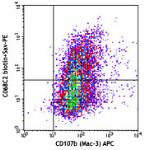
Thioglycollate-elicited Balb/c peritoneal macrophages were s... 
-
Purified anti-mouse CD206 (MMR)
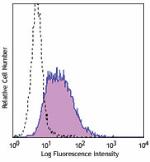
Thioglycollate-elicited BALB/c mouse peritoneal macrophages ... -
FITC anti-mouse CD206 (MMR)
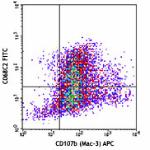
Thioglycollate-elicited Balb/c macrophages were fixed/pemeab... 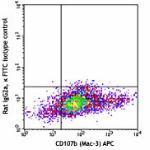
-
PE anti-mouse CD206 (MMR)
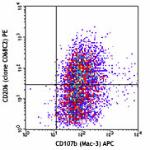
Thioglycollate-elicited BALB/c peritoneal macrophages were s... 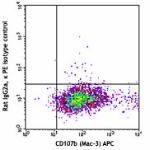
-
APC anti-mouse CD206 (MMR)
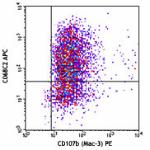
Thioglycollate-elicited BALB/c peritoneal macrophages were s... 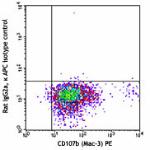
-
Alexa Fluor® 488 anti-mouse CD206 (MMR)
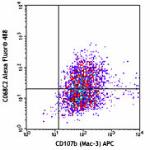
Thioglycollate-elicited BALB/c peritoneal macrophages were s... 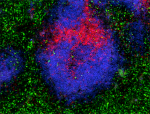
C57BL/6 mouse frozen lymph node section fixed, permeabilized... 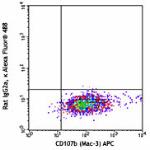
-
Alexa Fluor® 647 anti-mouse CD206 (MMR)
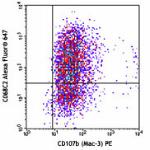
Thioglycollate-elicited BALB/c peritoneal macrophages were s... 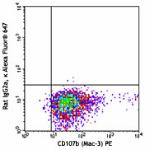

C57BL/6 mouse frozen lymph node section was fixed with 4% pa... -
PerCP/Cyanine5.5 anti-mouse CD206 (MMR)
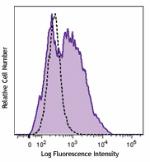
Thioglycollate-elicited BALB/c mouse peritoneal macrophages ... -
PE/Cyanine7 anti-mouse CD206 (MMR)

Thioglycollate-elicited BALB/c mouse peritoneal macrophages ... -
Brilliant Violet 421™ anti-mouse CD206 (MMR)

Thioglycollate-elicited BALB/c mouse peritoneal macrophages ... 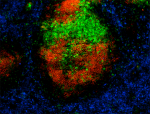
C57BL/6 mouse frozen lymph node section was fixed with 4% pa... 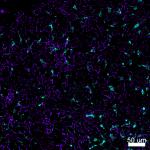
Confocal image of C57BL/6 mouse thymus sample acquired using... 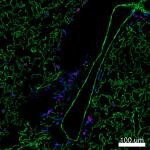
Confocal image of C57BL/6 mouse lung sample acquired using t... 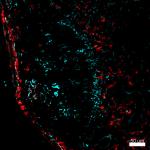
Mice were injected subcutaneously with sheep red blood cells... 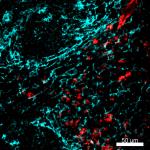
Mice were injected subcutaneously with sheep red blood cells... -
Brilliant Violet 605™ anti-mouse CD206 (MMR)

Thioglycollate-elicited Balb/c peritoneal macrophages were f... 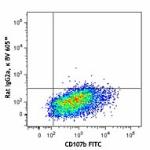
-
Brilliant Violet 650™ anti-mouse CD206 (MMR)
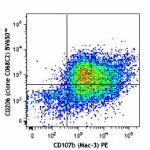
Thioglycollate-elicited BALB/c mouse peritoneal macrophages ... 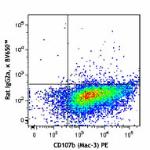
-
Alexa Fluor® 594 anti-mouse CD206 (MMR)
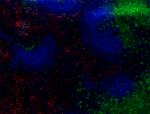
C57BL/6 mouse frozen spleen section was fixed with 4% parafo... -
Brilliant Violet 711™ anti-mouse CD206 (MMR)
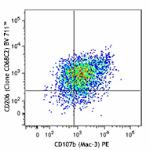
Thioglycollate-elicited Balb/c peritoneal macrophages were f... 
-
Brilliant Violet 785™ anti-mouse CD206 (MMR)
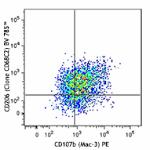
Thioglycollate-elicited Balb/c peritoneal macrophages were f... 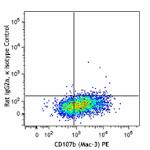
-
PE/Dazzle™ 594 anti-mouse CD206 (MMR)
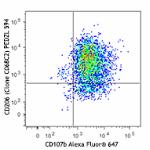
Thioglycollate-elicited Balb/c peritoneal macrophages were f... 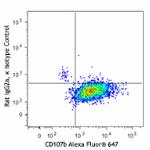
-
Alexa Fluor® 700 anti-mouse CD206 (MMR)
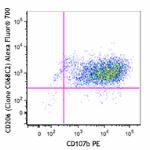
Thioglycollate-elicited BALB/c peritoneal macrophages were f... 
-
Spark YG™ 570 anti-mouse CD206 (MMR)
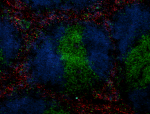
C57BL/6 mouse frozen spleen section was fixed with 4% parafo... -
PE/Cyanine5 anti-mouse CD206 (MMR)

Thioglycollate-elicited BALB/c peritoneal macrophages were f... -
PE/Fire™ 700 anti-mouse CD206 (MMR)

Thioglycollate-elicited BALB/c peritoneal macrophages were s... -
TotalSeq™-B0173 anti-mouse CD206 (MMR)
-
Spark Red™ 718 anti-mouse CD206 (MMR) (Flexi-Fluor™)
-
Spark Blue™ 574 anti-mouse CD206 (MMR) (Flexi-Fluor™)
-
TotalSeq™-C0173 anti-mouse CD206 (MMR) Antibody
 Login / Register
Login / Register 













Follow Us